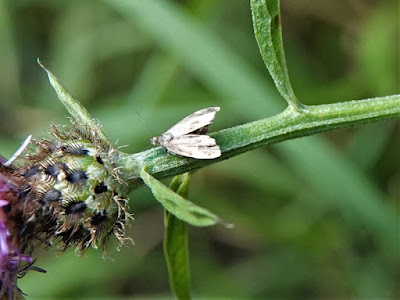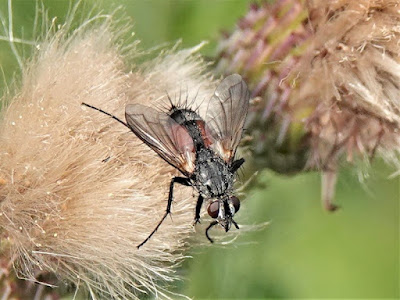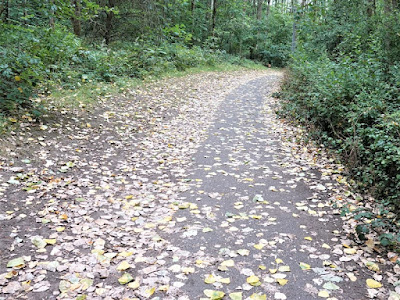16.0°C > 22.0°C: Sunny intervals with variable medium-level patchy cloud. Moderate south-westerly breeze gusting fresh. Excellent visibility.
Sunrise: 05:04 BST
* = a species photographed today
$ = my first sighting of the species for this year
$$ = my first ever recorded sighting of the species in the area
Back to as normal a Summer schedule visit as I am ever going to achieve this morning. Once around the Balancing Lake; up to and around The Flash; an a return for a second, more gentle, circuit of the lake.
Priorslee Balancing Lake: 05:00 – 06:15 // 07:35 – 10:00
(171st visit of the year)
Bird notes:
- eight Canada Geese when I arrived: another six flew in, some of which departed again.
- only two broods of Mallard noted of four and five birds. I suspect many of the extra adults noted are in fact full grown Mallard duckling, now more or less indistinguishable from the adults.
- a duck Pochard found. Could it be the same one? Where has she been? Hiding?.
- the juvenile Great Crested Grebes were a challenge as the broods with multiple juveniles are now no longer with one of the parents and not easy to find. Also the oldest of the juveniles was not found. I am hoping this is because the lake is so covered in weed that sleeping birds are hard to see.
Bird(s) noted flying over here:
- 2 Stock Doves: together
- 116 Wood Pigeons
- 3 Lesser Black-baked Gulls
- 36 Jackdaws
- 56 Rooks
Counts from the lake area:
- 14 Canada Geese: see notes
- 1 Greylag Goose
- 2 Mute Swans
- 32 (?♂) + 9 (2 broods) Mallard: see notes
- 1 (0♂) Pochard
- 6 + 1 (1 brood) Moorhens
- 95 Coots
- 8 + 6 (3 broods) Great Crested Grebes
- 13 Black-headed Gulls
- 3 Lesser Black-baked Gulls
- 1 Grey Heron
Hirundines etc. noted:
- 1 Swift
- 1 Barn Swallow
Warblers recorded (the figure in brackets is birds noted singing):
- 1 (0) Cetti's Warbler
- 7 (3) Chiffchaffs
- 6 (2) Reed Warbler
- 6 (4) Blackcaps
- 1 (0) Garden Warbler
Noted on the West end street lamp poles around-dawn:
Moths:
*1 Satin Grass-moth Crambus perlella [was Satin Grass-veneer]: flew from vegetation beside a lamp pole with two other, possibly this species
*1 $ Round-winged Muslin Thumatha senex : moth species #70 here in 2025
Flies:
*2 midges
Spiders, harvestmen etc.:
1 Bridge Orb-web Spider Larinioides sclopetarius
Noted later:
Most notable was, to my chagrin, the brief sighting of a mammal that I cannot for the life of think what it could be. The body looked to be the size of a very large and fat Rat with a marked contrast between the grey-brown upper-parts and a very pale buff underside. It did not seem to have a tail of any substance. It popped out of the vegetation and almost immediately saw me and disappeared.
Butterflies:
*Large White Pieris brassicae
Small White Pieris rapae
Green-veined White Pieris napi
Speckled Wood Pararge aegeria
Meadow Brown Maniola jurtina
*Gatekeeper Pyronia tithonus
Peacock Aglais io
Moths
*2 Common Nettle-taps Anthophila fabriciana
3 Straw Grass-moth Agriphila straminella : at least another 10 unidentified grass moths
>15 unidentified grass moths
1 Pale Straw Pearl Udea lutealis
*1 $ Mother of Pearl Patania ruralis [was Pleuroptya ruralis]: moth species #71 here in 2025
6 Cinnabar Tyria jacobaeae caterpillars
Bees, wasps etc.:
Common Carder Bee Bombus pascuorum
Buff-tailed Bumblebee Bombus terrestris
Common Wasp Paravespula vulgaris
*probable Wall Mason Wasp Ancistrocerus parietinus
*small ichneumon
Hoverflies:
Bumblebee Blacklet Cheilosia illustrata
*Marmalade Hoverfly Episyrphus balteatus
Tapered Dronefly Eristalis pertinax
Migrant Field Syrph Eupeodes corollae [Migrant Hoverfly; Migrant Aphideater]
Meadow Field Syrph Eupeodes latifasciatus [Broad-banded Aphideater]
Common Spotted Field Syrph Eupeodes luniger [Lunuled Aphideater]
Tiger Hoverfly Helophilus pendulus
Chequered Hoverfly Melanostoma scalare [Long-winged Duskyface]
*Banded Meliscaeva Meliscaeva cinctella [Banded Thintail]
*Dead-head Hoverfly Myathropa florea [Common Batman Fly]
Common Twist-tail Sphaerophoria scripta [Long Hoverfly; Common Globetail]
Syrphus sp. S. ribesii / S. vitripennis
Dragon-/Damsel-flies:
Common Blue Damselfly Enallagma cyathigerum [Common Bluet]
*Blue-tailed Damselfly Ischnura elegans [Common Bluetail]
Black-tailed Skimmer Orthetrum cancellatum
unidentified hawker in flight
Other flies:
*Tachinid fly Eriothrix rufomaculata [Red-sided Eriothrix]
plenty of unidentified fly species
Bugs:
Common Flower Bug Anthocoris nemorum
Beetles:
7 Spot Ladybird Coccinella 7-punctata
Harlequin Ladybird Harmonia axyridis var. spectabilis
Common Red Soldier Beetle Rhagonycha fulva
Amphibians:
none
Spiders, harvestmen etc.:
money spider Erigone sp.
Zebra Spider Salticus scenicus
New flowers for the year:
*Water Mint Mentha aquatica
Look: after so many clear mornings almost a sunrise. Rain promised tomorrow!
The head profile identifies this duck as a Pochard. Where has she been?
One of three grass moths that scattered from under a street lamp around dawn. This is a Satin Grass-moth Crambus perlella and the others were likely to be the same species.
As I have remarked before the only species of Cheilosia hoverfly that is not almost all black and which I do not have to double-check with the literature. This is a Bumblebee Blacklet C. illustrata.
A smart Banded Meliscaeva hoverfly Meliscaeva cinctella.
Coming to get you: a Dead-head Hoverfly Myathropa florea.
...but shows better here as a different specimen dives in to feed.
(Ed Wilson)
------------------------------------------------------------------------------------------------------
In the Priorslee Avenue tunnel:
Moths: [27 species here before today; no additions]
none
Other Flies:
2 moth flies Psychodidae sp. [Drain Fly or Owl Fly]
16 midges of various species.
Arthropods:
1 White-legged Snake Millipedes Tachypodoiulus niger
Spiders, harvestmen etc.:
2 Missing Sector Orb-web Spiders Zygiella x-notata [Silver-sided Sector Spider]
1 harvestman Opilio canestrinii
(Ed Wilson)
------------------------------------------------------------------------------------------------------
The Flash: 06:20 – 07:30
(168th visit of the year)
Bird notes:
- many of the geese now have their wings and Canada Geese in particular were flying out in small groups.
- just four Mute Swans.
- yesterday's new brood of six Mallard ducklings was not seen. However a single fast-growing duckling was seen.
- just 12 Tufted Duck.
- two Great Crested Grebes still. One was sitting on a nest site at the top end with the other in close attendance.
- a Grey Heron present throughout again.
- a Nuthatch calling alongside Teece Drive was my first record here for over two months.
Bird(s) noted flying over here:
- c.40 Racing Pigeons flew low north-west c.06:50: a strange time of day?
- 2 Lesser Black-backed Gulls
Noted on / around the water:
- 98 Canada Geese
- 43 Greylag Geese
- 4 Mute Swans
- 15 (?♂) + 1 (1 brood) Mallard: see notes
- 12 (10?♂) Tufted Duck
- 4 + 1 (1 brood) Moorhens
- 83 + 12 (5 broods) Coots
- 2 Great Crested Grebes: see notes
- *8 Black-headed Gulls: all adults
- 1 Grey Heron
Hirundines etc. noted:
- 2 Barn Swallows, briefly
- 2 House Martins
Warblers recorded (the figure in brackets is birds noted singing):
- 5 (3) Chiffchaffs
- 2 (2) Blackcaps
Noted around the area:
Butterflies:
none
Moths [on street lamp poles and in the grass] [55 species here before today; two additions today]
*5 Straw Grass-moth Agriphila straminella [was Straw Grass-veneer]: at least another four "got away" and likely this species
*1 $ Swallow-tailed Moth Ourapteryx sambucaria [species #56]
*1 Straw Dot Rivula sericealis [species #57]
Bees, wasps etc.:
none
Hoverflies:
Marmalade Hoverfly Episyrphus balteatus
Chequered Hoverfly Melanostoma scalare [Long-winged Duskyface]
*$$ Common Pufftail Sphegina clunipes
Dragon-/Damsel-flies:
none
Other flies:
numerous different midges and flies
Bugs:
*Common Flower Bug Anthocoris nemorum
*possible female Orthonotus rufifrons
Beetles:
larvae of Alder Leaf Beetle Agelastica alni
7 Spot Ladybird Coccinella 7-punctata
Common Red Soldier Beetle Rhagonycha fulva
Spiders, harvestmen etc.:
harvestman Dicranopalpus ramosus/caudatus: five all on different street lamp poles
New flowers for the year:
None
Autumn already? No: just the trees shedding leaves in response to their stress from the dry and hot conditions.
Two Black-headed Gulls still in full breeding plumage. I have not seen any juveniles as yet so these are likely failed breeders returning first to their wintering area. The nearest bird seems to have only one leg. Birds often "tuck one up": I am not sure this one has.
My best attempt at photographing a Straw Grass-moth Agriphila straminella. Once flushed, always before I have seem them, they are very wary of a close approach and always hide in the grass where persuading the camera to focus between all the blades is a challenge.
The best moth of the day was this Swallow-tailed Moth Ourapteryx sambucaria. Moth species #59 here this year for me.
None
Autumn already? No: just the trees shedding leaves in response to their stress from the dry and hot conditions.
A Straw Dot moth Rivula sericealis. It is now late in this species' flight period so this may be the last I see this year.
(Ed Wilson)
------------------------------------------------------------------------------------------------------
2012
Priorslee Lake
Common Tern
Possible Otter
(Ed Wilson)
2011
Priorslee Lake
A female Ruddy Duck
(Ed Wilson)
2006
Priorslee Lake
A drake Ruddy Duck
(Ed Wilson)
2005
Priorslee Lake
Common/Arctic Tern
(Martin Adlam)
Priorslee Lake
Common Tern
Possible Otter
(Ed Wilson)
2011
Priorslee Lake
A female Ruddy Duck
(Ed Wilson)
2006
Priorslee Lake
A drake Ruddy Duck
(Ed Wilson)
2005
Priorslee Lake
Common/Arctic Tern
(Martin Adlam)


























